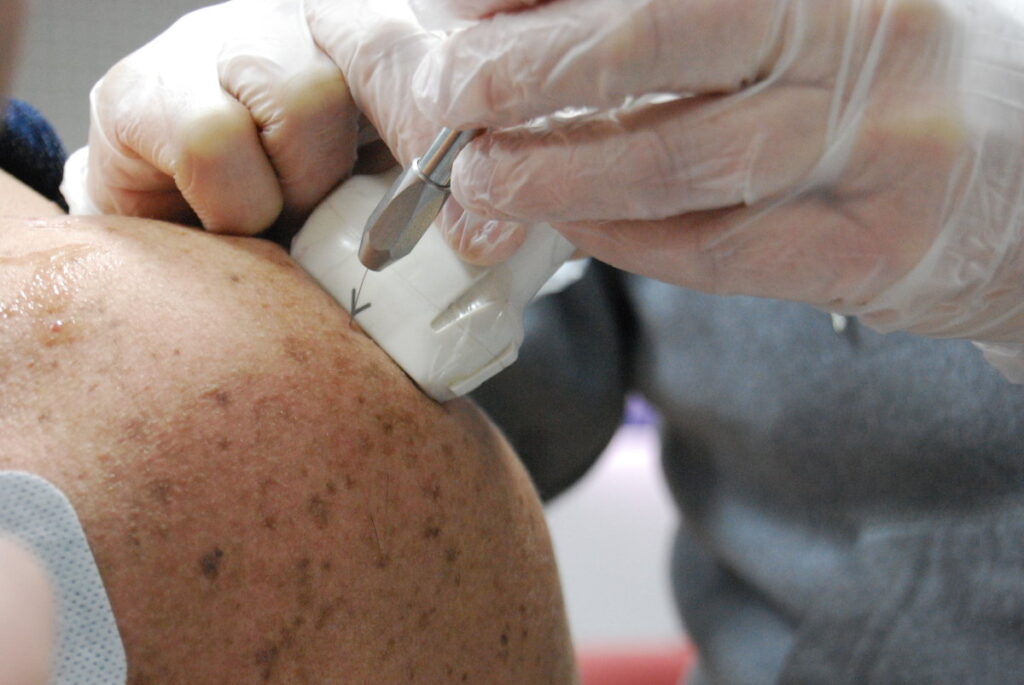“Tendinitis” is the coloquial word to describe the pathology affecting a tendon. This term is, nowadays, has almost fallen in disuse, as that doesn’t take into consideration the histological changes in the tissue. If we think to have the symptoms of a tendon damaged, we should visit a therapist. The physiotherapist has a wide range of tools for tendinopathies treatment. This article only has the purpose to provide some information about tendon pathology, but it doesn’t claim to substitute the diagnostis or the therapy management prescribed by the sanitary professional.
What are the main symptoms of the tendon damage?
One of main characteristics of tendon damage is the pain, that could be a great and incapacitating pain or a dull pain linked to movement. One or the other kind of pain will depend on the evolution stage of damage, and in both cases that will imply a load manage applied to the structure. This pain will be a tip of a finger pain, increasing with movement and even associated to functional impotence and rigidity. It is a local pain, It is not common that tendon pain will move to closer areas. In this case, a differencial diagnostis will be recquired.
The complete rest is usually contraindicated: the load must be managed from less to more depending on the symptoms. In fact, providing exercise guideliness will be indispensable as a part of the treatment. Tendon damage is not only recognised by pain, there is also a muscular function disorder and lost of motor control, in some cases.
What is the incidence of tendon injury?
The number of tendon injuries has uprise last decades, due to the increase of loads applied to the structure, as a professional sportsman, amateur player or worker Also a sedentary way of life (lack of load) and some systematic diseases associated to an inactive activity are also risk factors for these kind of injuries.
Among more prevalent tendinopathies, there are those affecting:
- Rotator cuff (supraespinatus).
- Epycondile tendon or “tennis elbow”
- Patellar tendon or “jumper knee”
- Achilles tendon.
- Gluteal muscles tendinopathy
- Pubis
Almost ever tendon structure could suffer from these kind of injuries, depending on the individual risks factors of each patient. An essencial part of the treatment is the load manage and guided therapeutic exercise, by a sanitary professional.
Almost ever tendon could suffer from these kind of injuries
Treatment of the tendon injury
When an injury occurs, your therapist could opt for an electrolysis EPTE appliation, as a part of the treatment. This will help the physiological process of tendon recovery. It must be included of a whole damage approach and guided by a correct clinical reasoning.
Theload modulation and therapeutic exercise is one of the most important elements to manage when a damage tendon. With another tools available for the physiotherapist or the doctor, e. g, the electrolysis, will help to manage the different evolution stages of the damage.
One of the options in the therapeutic repertoire is the invasive treatment, being the percutaneous electrolysis therapy a part of it. It is not used to be a first choice technique. It allows to accurately focus the treatment, and it has been proved its effectiveness in tendinopathies. The prevention with the habbit to warm up before the activity of the exercise is very important, also to respect the times of recovery after the effort (combine with rest, recovery…) a good postural hygiene and a correct training.
Why is not correct the term “tendonitis” or “tendinitis?
“Tendinitis” or “tendinotis” is a term not corresponding with the ethology per se of the tendon injury. It will be more excactly to refers to that damage as “tendinopathy“, what involves many different pathologic processes, depending on the evolution of the injury. In fact, ethimologically, “Tendonitis” has the “-itis” ending, what does mean “inflammation”. The main treatment in this case will be to rest and farmacological treatment with anti-inflammatories.
The use of “tendinitis” term would be negative, in case of tendon injuries, as the complete rest or the continuos intake of this AINEs, or even some analgesic, will have a negative impact in the injury recovery. This inflammatory attribute of the tendon injury is a controversial issue and will be more relevant in the first phases of the injury, commonly asymptomathic and with an completely unknowed relationshiop with the chronification fo the disease.
Thanks for reading this article. We also recommend you:
http://www.electrolisisterapeutica.com/en/human-movement-evolution/
http://www.electrolisisterapeutica.com/en/10-reasons-to-choose-percutaneous-electrolysis-epte/


